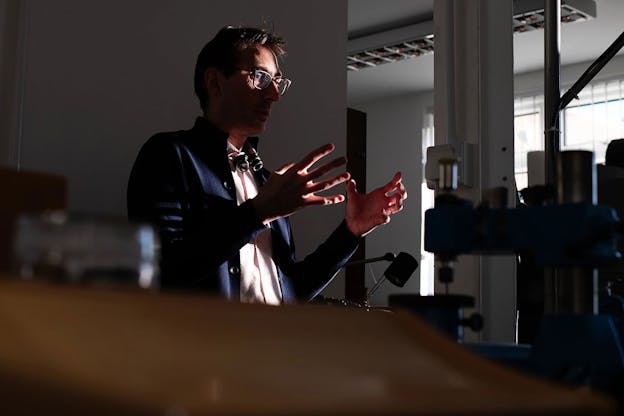Recommended Reading: The Philosophies Of Stephen McDonnell, At A Collected Man
The watchmaker behind two of MB&F’s most complicated watches talks process, innovation, and the benefits of relative obscurity.
Stephen McDonnell became a household name for a certain demographic of watch enthusiasts because of two watches. These are the MB&F LM Perpetual, and the MB&F Sequential EVO Chronograph, which was recently released in a new flyback version. These may be his most publicly visible projects, but his involvement with watchmaking as well as his personal journey through the industry, first as a WOSTEP student, then as an instructor, and then as an independent watchmaker striking out on his own and specializing in designing and prototyping complications, goes back a long way. As far as I can tell from the interview, McDonnell knew that he was in some sense so inclined to work with watches and clocks that there wasn’t really any other option. The interview begins at the beginning – with his childhood, when more or less at the same time he knew he loved not just machines, but horological machines, but thanks to time and place, felt as if there was absolutely no such thing as a future in it.
“If you grow up here you would never consider watchmaking … because it’s unknown as a career. Nobody becomes a watchmaker if you grow up in Northern Ireland and it’s nearly the same in England. It is a little bit better now; slowly it improves. But I was born in 1974, so we’re talking early 1990s when I went to university. Watchmaking was something I adored and have been obsessed with since I was a small child. I really got into it when I was about five or six years old when I got hold of a mechanical clock. When I was at school, I always felt this is something I’m mad about, but it will only be like a private interest for me. There is no career to be had; this doesn’t exist anymore. ”

The interview is full of pungent observations about the real world behavior of complications as well:
“At first Max [Büsser] wanted nothing to do with an idea for a perpetual calendar. He of course had previously worked at Harry Winston and Jaeger-LeCoultre and he had nothing but problems with perpetual calendars. They didn’t work properly, and nobody even expected that they should work properly. It was taken as part of the game that they would sell the watch to the client, the client would break it and it would be sent back to the after-sales service, and the watch would just come and go.”
And then there are his reminiscences of the early days of working with MB&F, on HM1:
“He [Max Bùsser] had employed a company to produce all the components, assemble the watches and supply him with cased watches, which he would then sell. Midway through this process that company was sold and changed hands and the new owners didn’t want to work with Max any more. So, they just gave him several large cardboard boxes filled with thousands of components and told him to sling his hook.”
The entire interview is like that – a real, candid, clear-eyed look at what goes into making a movement, designing a movement, designing a watch, and just how much sheer determination it takes to make a mechanism that really thinks outside the box – and what it takes to get it out into the world. The best article you’ll read all week, guaranteed – check the whole thing out at ACollectedMan.com.

